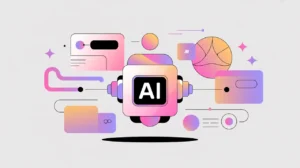Importance of Leadership Competencies for AI Adoption
Leadership Competencies for AI Adoption refer to the skills, mindsets, and practices leaders need to guide organizations through the integration of artificial intelligence. As AI reshapes operations, services, and stakeholder expectations, leaders must balance technical knowledge with ethical judgment and change management. Their importance today lies in ensuring that AI adoption is not only technologically sound but also aligned with mission, values, and community trust.
For social innovation and international development, leadership competencies matter because organizations often work in sensitive contexts where poorly led AI adoption could compromise equity, safety, or legitimacy.
Definition and Key Features
Effective AI leadership draws from both digital transformation practices and emerging AI governance frameworks. Core competencies include strategic vision, ethical reasoning, stakeholder engagement, and the ability to foster cross-disciplinary collaboration. Leaders must also develop fluency in AI basics. They do not need to become technical experts, but they do need to know enough to ask informed questions and make accountable decisions.
This is not the same as general digital leadership, which may focus on IT adoption without considering AI-specific risks such as bias, explainability, or workforce disruption. Nor is it equivalent to technical expertise alone, which lacks the broader organizational and ethical dimensions. AI leadership requires integrating multiple perspectives into coherent action.
How this Works in Practice
In practice, leadership competencies for AI adoption might include guiding an education initiative through piloting adaptive platforms, building staff confidence through training, and setting up safeguards for data use. A health NGO leader may need to negotiate partnerships with AI vendors while ensuring diagnostic tools meet ethical and clinical standards. Humanitarian leaders may use AI for logistics optimization while engaging communities to maintain trust.
Challenges include limited resources for leadership development in nonprofits, cultural resistance to change, and the speed of technological evolution outpacing leadership preparedness. Leaders must navigate trade-offs between innovation and caution, efficiency and equity.
Implications for Social Innovators
Leadership competencies are critical across mission-driven sectors. Health program leaders must steward safe integration of AI into patient care. Education leaders must align AI use with pedagogical goals and equity principles. Humanitarian leaders must ensure AI deployment respects dignity and rights in crisis contexts. Civil society leaders play a key role in advocating for responsible, transparent AI governance.
By cultivating AI-ready leadership competencies, organizations create the vision, trust, and capacity needed to adopt AI responsibly and sustainably.







